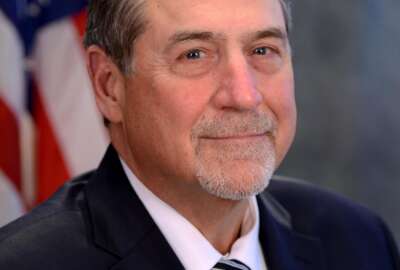
If confirmed, Census Bureau director nominee faces uphill hiring challenge for 2020 count
The White House announced Wednesday that President Donald Trump intends to nominate Steven Dillingham, a current Peace Corps official, as the Census Bureau's...
The Census Bureau is one step closer to filling its top leadership position as the agency faces considerable IT and workforce challenges in the lead-up to the 2020 population count.
The White House announced Wednesday that President Donald Trump intends to nominate Steven Dillingham, a current Peace Corps official, as the Census Bureau’s newest permanent director.
If confirmed, Dillingham would be the first permanent director in more than a year. Former Census Bureau Director John Thompson stepped down last summer after serving nearly four years on the job.
“With his wealth of experience, the Bureau will be well positioned to ensure a complete and accurate 2020 census,” Commerce Secretary Wilbur Ross said in a statement.
Ross also announced that acting Census Bureau Director Ron Jarmin, a career employee with more than 30 years of experience, would serve as the deputy director of the agency.
The pending change in leadership comes as the Census Bureau enters the final leg of preparations for the 2020 population count.
While the agency bills the upcoming decennial count as the first technology-driven census — households will be able to respond to the census online for the first time ever — the agency has expressed concerns with its ability to recruit thousands of temporary employees to go door-to-door during the lifecycle of the 2020 count.
In a blog post Tuesday, a senior agency communications official said the Census Bureau anticipates more difficulty hiring decennial count workers than it did in 2010.
“For the decennial census, the Census Bureau will need a large and diverse workforce to follow up by phone or in person with households that do not respond to the questionnaire. But, the lower the unemployment rate, the harder it can be to recruit,” said Robert Bernstein, the team lead of stakeholder relations at the agency’s decennial communications coordination office.
In previous decennial counts, the Census Bureau has drawn from a broad pool of talent when selecting temporary workers. In order to hire 635,000 seasonal employees for the 2010 count, the agency sifted through nearly 4 million job applications.
Lower unemployment rate problematic for Census Bureau
Phil Sparks, the co-director of the Census Project blog and a former associate director of communications at the Census Bureau, said the lower unemployment rate will likely reduce the number of incoming job applications.
“Recruiting the hundreds of thousands of temporary census takers in 2020 at a reasonable rate will be more difficult in a low-unemployment environment. And, because of the same circumstance, the quality of the 2010 workforce was extremely high. Both circumstances will not be possible in the next decennial,” Sparks said in an email.
In order to attract prospective employees, Bernstein said the Census Bureau will offer “competitive and attractive pay rates,” and will streamline the application process.
Terri Ann Lowenthal, a former staff director for the House census oversight subcommittee and the former co-director of the Census Project, said the Census Bureau needs to increase its outreach to community organizations to get the word out about hiring.
“Robust activities that connect the Census Bureau with partner organizations and trusted messengers at the state and, most importantly, local level, will be key to getting out the word about census jobs,” Lowenthal said.
According to a Census Bureau timeline, partnership specialists will start work with the agency in October.
Lowenthal also called on Congress to support funding to hire at least 2,000 partnership staff, or double the number the bureau plans to hire.
“Funding for an expanded partnership program is a wise investment in a cost-effective census, because if the bureau can’t recruit and hire enough census workers, it will have to increase pay rates and take other steps to ensure that the staff it is able to hire can carry out field operations thoroughly,” she said.
Would-be enumerators still need to pass a background check, and the agency aims to make the online application process only take 30 minutes to complete. On average, the 2010 form took about two hours to fill out.
While the plan never got off the ground, the Census Bureau recently entertained the idea of recruiting some of the Postal Service’s 600,000 employees to serve as part-enumerators.
Last year, Ross told lawmakers that the Commerce Department held negotiations with the Postal Service to have off-the-clock letter carriers help conduct follow-up work for the 2020 census.
However, those negotiations ultimately fell apart, with postal officials citing a disparity between letter carriers’ and census workers’ pay rates.
Copyright © 2024 Federal News Network. All rights reserved. This website is not intended for users located within the European Economic Area.
Jory Heckman is a reporter at Federal News Network covering U.S. Postal Service, IRS, big data and technology issues.
Follow @jheckmanWFED





